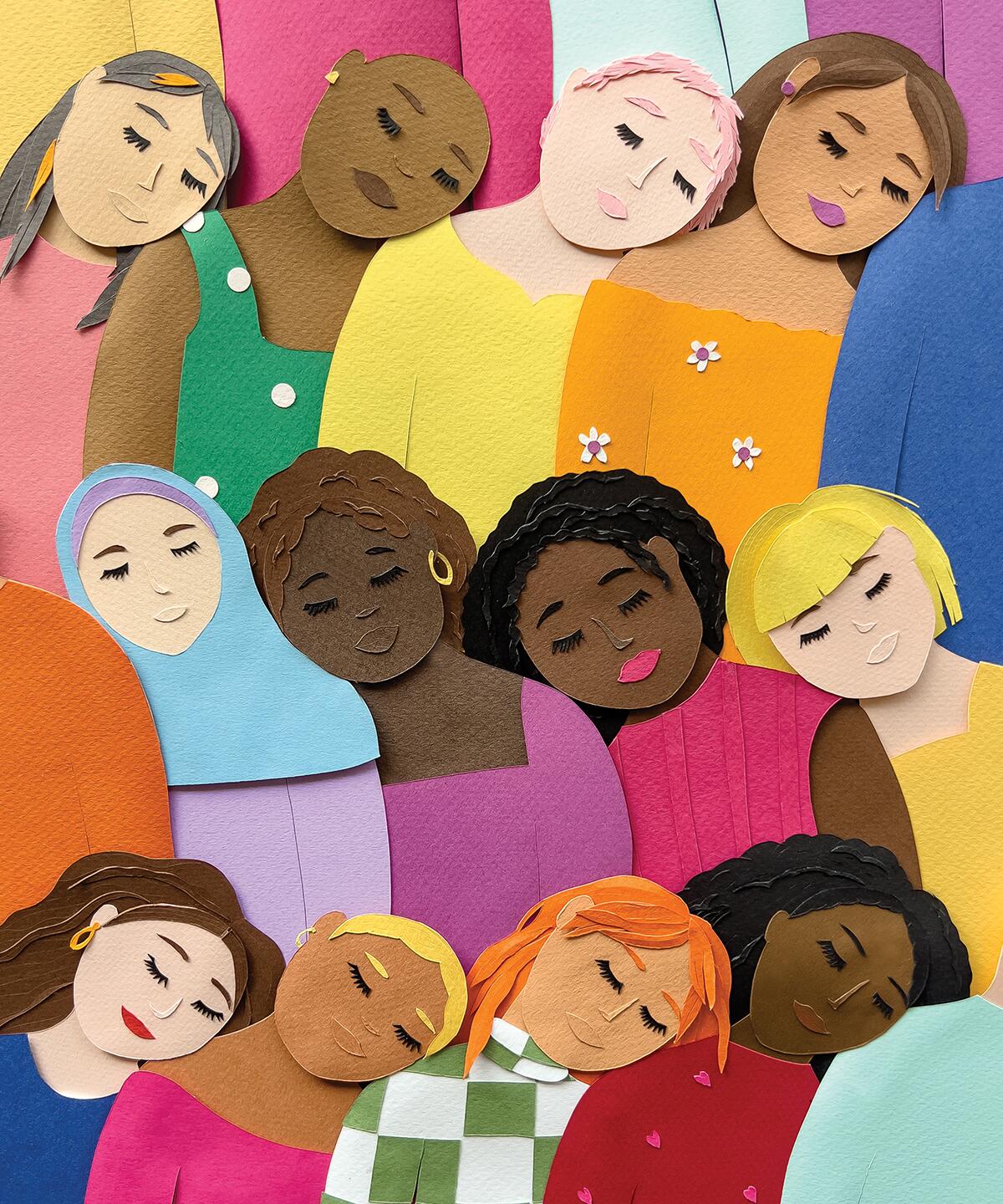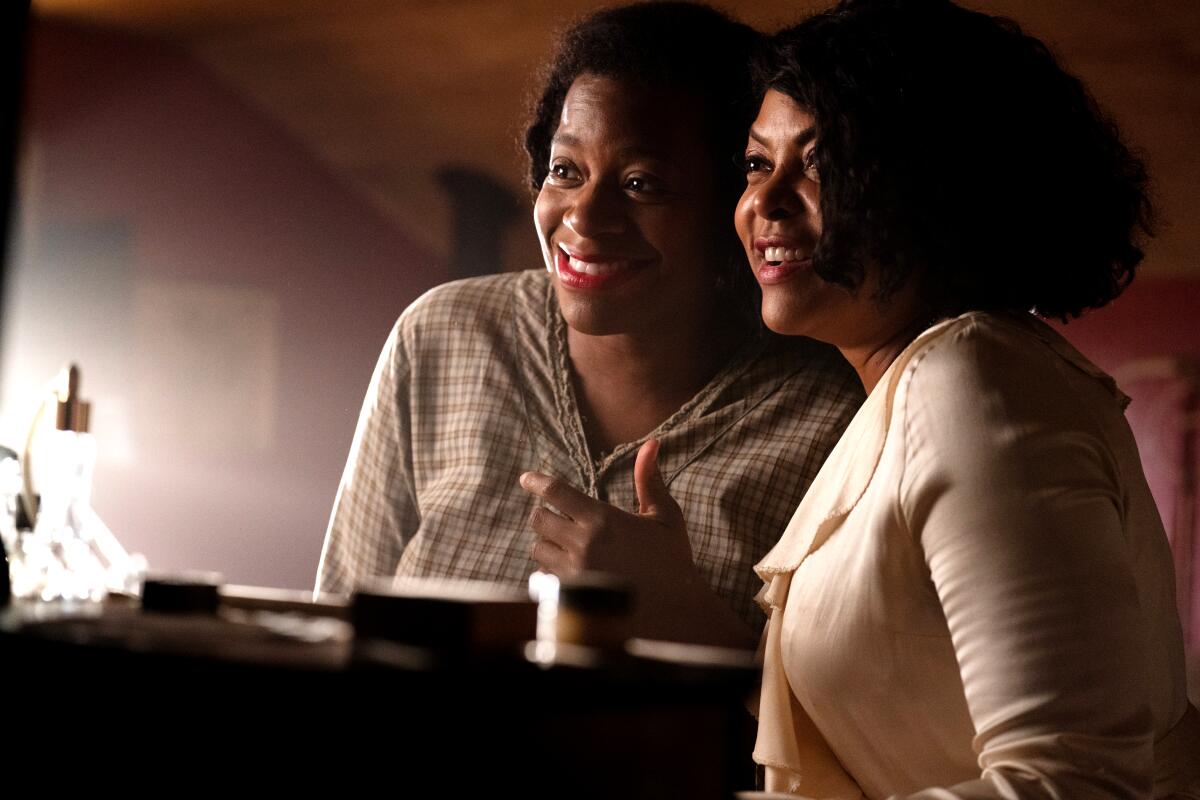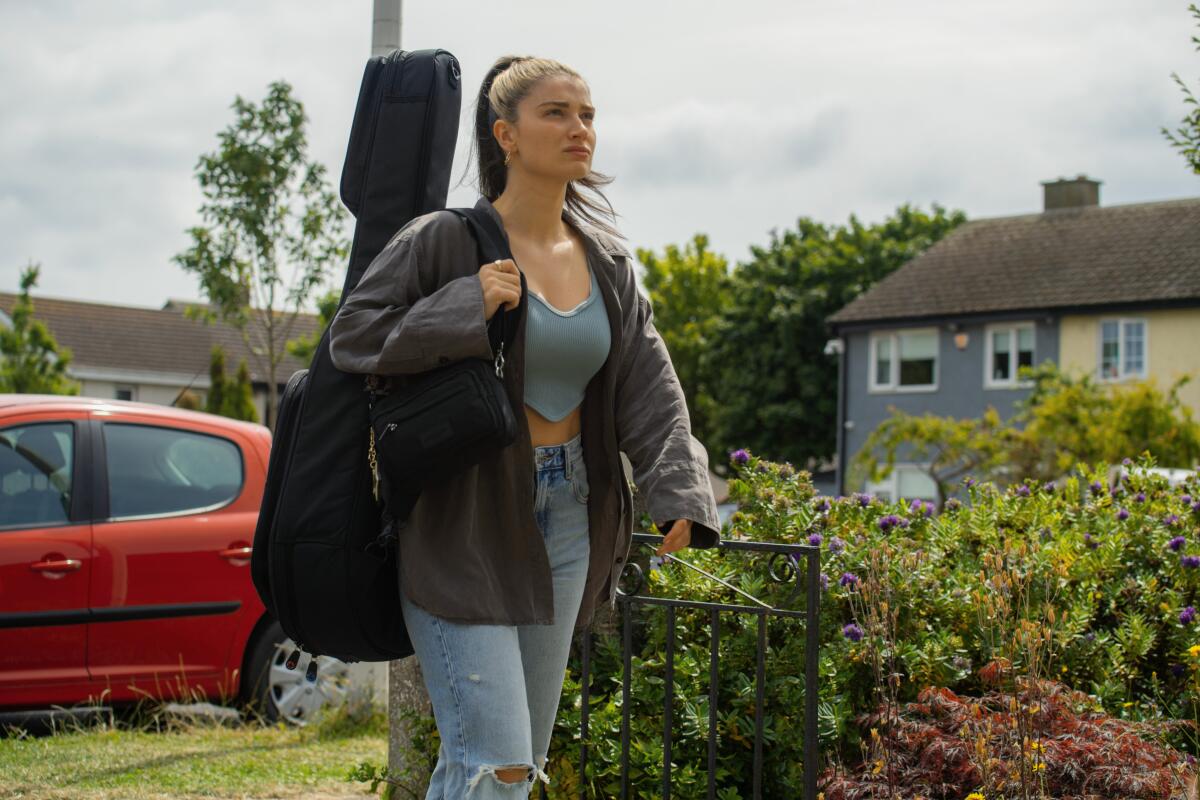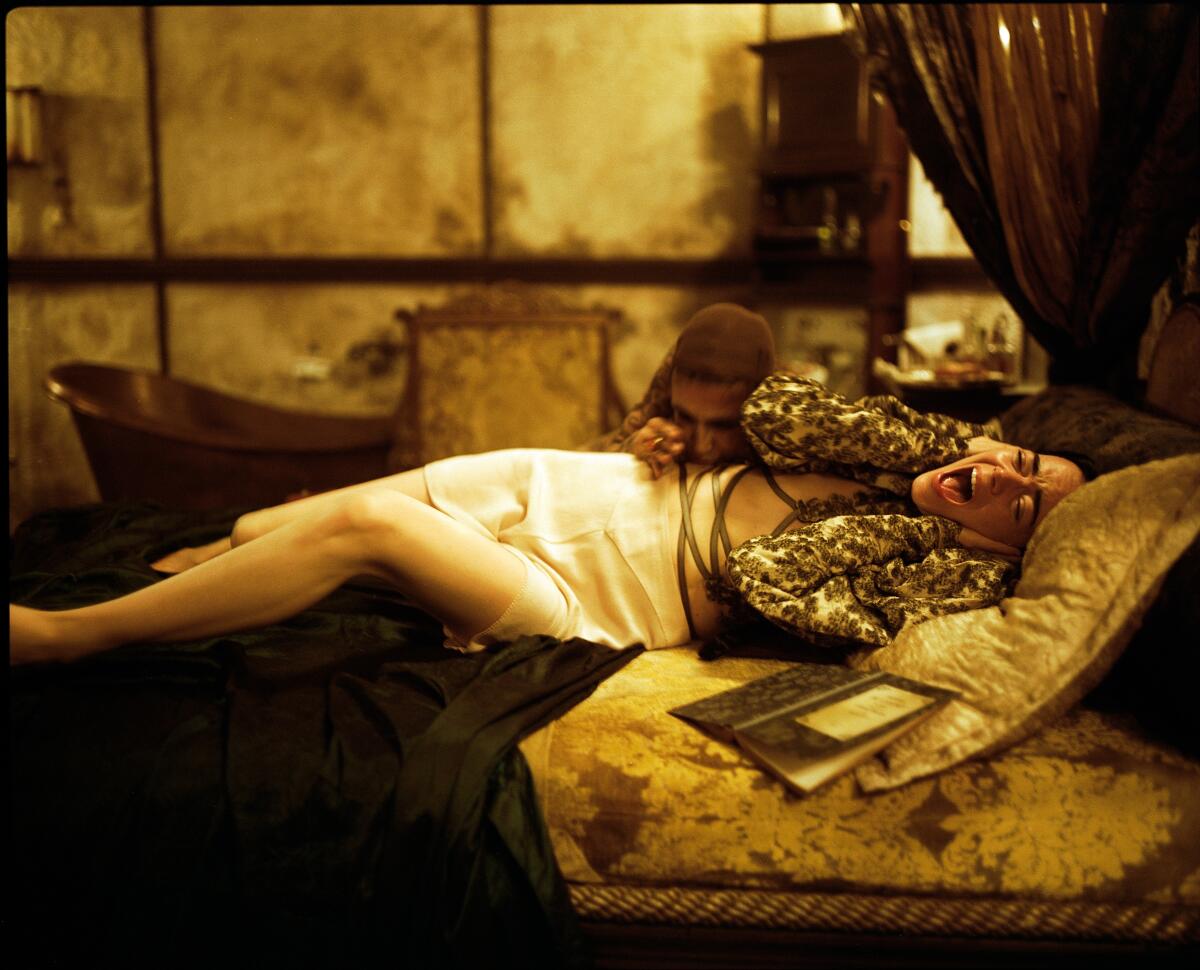At the movies, women are leaning on, not in, for guidance

- Share via
As a director, Blitz Bazawule knows that his voice goes pretty much unquestioned on the set. But once he signed on to make the newest, musical iteration of “The Color Purple” — a story about hardships and survival among Black women — he wanted to make sure that his wasn’t the only voice on set being listened to.
“You always have to be aware of your blind spots,” he says. “Whether behind or in front of the camera [on “Color Purple”], I made sure that the women working were the barometer for whether we were doing this right or wrong. These were women I would sit with in the mornings and talk through all the things we intended to do.”
Just a few years ago, women may have been told to “lean in,” but a new crop of films out this season are showing — as Bazawule indicates — that women leaning on one another is a much more powerful statement. Friendships among women in movies aren’t so unusual, but recent offerings are showcasing female relationships with greater nuance than before. Such films as “Poor Things,” “Are You There God? It’s Me, Margaret.,” “Color Purple,” “The End We Started From” and even “Flora and Son” are using their female characters as more than just BFFs, competition or tight relations: They’re the pillars that elevate the story.

The title character of “Margaret,” for example, is surrounded by her mom and grandmother, who are “emotional midwives” for her, says director/writer Kelly Fremon Craig. It’s a story that could have been filmed any time after 1970, when Judy Blume first published her novel. But having it come out in 2023 — five years after #MeToo provoked conversation and change in both the industry and on the screen — gave it a unique resonance, says Craig.
“I personally have felt a change in the industry,” she says. “I suddenly felt a window open up, and a lot of it was post-Me Too, where suddenly there was this swell of support for women’s stories. It was a real inflection point, where things started to change, and we’re seeing the fruits of that change now.”
In “Flora and Son,” the title mother dithers about whether to leave her teen son with his dad for a new love halfway across the world — and goes to her friend and cousin Kathy for support and guidance. Kathy gives her the verbal slap in the face she needs. “She’s the crucial gate that stops Flora going down that path of self-indulgence and self-destruction to face the reality of what her life is,” says producer Rebecca O’Flanagan. It’s a role that might have been filled by a mother character in the past, but, O’Flanagan says, “we didn’t want that generational thing” in the film.

“Women who can support each other and take on a mentoring role — I think we’ve broadened what our focus audience is,” she adds, noting that “Flora” is a different kind of coming-of-age story — one for a single mother. “It’s about making space for [Flora’s son] in her life but not losing her own agency,” says O’Flanagan.
Nor are these films’ female friendships and support meant to answer all of life’s problems in a comforting, indulgent way. In “The End We Start From,” the protagonist (known only as Woman) befriends another single mother called O, and it seems as though they might permanently escape an environmental apocalypse on an island commune. But solutions are not that easy.
“[It] isn’t a film where problems are solved as such,” writes director Mahalia Belo via email. “We were rooting for a truth that doesn’t settle. We set out to tell a story that doesn’t offer a panacea for life.”
“Poor Things” features Bella, a reanimated woman who has to invent her life, and her guideposts are a prostitute, a brothel madam and a former actress. But they’re not “helpers” in a traditional sense, as casting director Dixie Chassay underscores. “These women are written with [traditional] male freedom. They’re written like three-dimensional human beings who have desires…. [They’re] characters we don’t get to see on screen so frequently as significant people existing in their own worlds.”

Bazawule notes that “Color Purple,” which has almost no cast members who are not people of color, ramps up this unique perspective of women helping women to a new level. “It’s more than incredible to see other women of the same hue have the opportunity to be the catalyst for each other’s change,” he says. “It’s something that [the absence of] has plagued Black storytelling in general.”
And perhaps films like these are flourishing because their target audiences now have better access to view them, as O’Flanagan suggests. “They’re able to consume their stories in a way that is super-convenient, and these stories put mothers or women at the center of them [so] that creates a demand for these films,” she says. “It’s about feeling you’re part of the conversation of the moment — part of the zeitgeist.”
Ultimately, though, movies like these offer new shades not just of female-centered stories, but of how women can interrelate. It may be a subtle difference on one level, but it’s earth-shaking on another.
“What these films are doing by showing support between women and how we connect with each other despite our differences sends a hopeful message for the film-consuming public,” says O’Flanagan. “It says, ‘Perhaps there’s another way — that there can be space for another way to do, and say, these things.’”
More to Read
From the Oscars to the Emmys.
Get the Envelope newsletter for exclusive awards season coverage, behind-the-scenes stories from the Envelope podcast and columnist Glenn Whipp’s must-read analysis.
You may occasionally receive promotional content from the Los Angeles Times.










